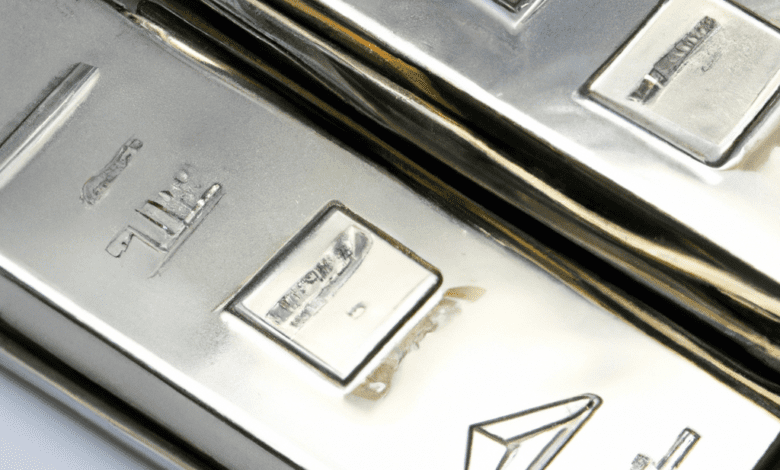Platinum vs. Palladium: A Comprehensive Guide to Choosing the Smarter Investment

When it comes to investing in precious metals, platinum and palladium often emerge as two compelling options, each boasting unique characteristics and market dynamics. As investors seek to diversify their portfolios and hedge against economic uncertainties, understanding the nuances of these two metals is essential. Platinum, traditionally associated with luxury and automotive applications, has long been regarded as a stable investment. In contrast, palladium has surged in popularity in recent years, driven by its critical role in catalytic converters and increasing demand from the automotive industry. In this article, we will delve into the fundamental differences between platinum and palladium, explore their historical market performance, and evaluate the risks and benefits associated with investing in each. By the end, you’ll have a clearer perspective on which metal might be the better investment for your financial goals.
- 1. **"Understanding the Basics: Platinum and Palladium Explained"**
- 2. **"Market Trends and Performance: A Historical Comparison"**
- 3. **"Investment Considerations: Risks, Benefits, and Future Outlook"**
1. **"Understanding the Basics: Platinum and Palladium Explained"**
Platinum and palladium are both precious metals that belong to the platinum group of metals (PGMs), which also includes rhodium, ruthenium, iridium, and osmium. While they share some similarities, there are key differences that can influence their investment appeal.
Platinum, known for its dense and malleable properties, has been historically valued for its use in jewelry, catalytic converters, and various industrial applications, particularly in the automotive sector. This metal is often associated with luxury, given its rarity and the high-quality finish it provides in jewelry. The majority of the world's platinum supply comes from South Africa, which is home to some of the largest mines, making geopolitical factors and mining regulations significant influences on its price.
Palladium, on the other hand, has seen a dramatic rise in popularity over the past few decades, largely due to its increasing use in catalytic converters for gasoline engines. As the automotive industry shifts towards stricter emissions regulations, the demand for palladium has surged. Unlike platinum, which is often used in diesel engines, palladium is primarily utilized in gasoline engines, making it a preferred choice in markets where gasoline vehicles dominate. Russia and South Africa are the top producers of palladium, and like platinum, its price can be heavily impacted by supply chain issues and political stability in these regions.
Both metals are considered valuable hedges against inflation and currency fluctuations, making them attractive to investors looking for safe-haven assets. However, their market dynamics differ significantly. While platinum prices have historically been lower than those of gold, palladium has at times surpassed both in value due to its supply constraints and rising demand. Understanding these fundamentals is crucial for any investor considering whether to invest in platinum or palladium, as they navigate the complexities of each metal's market behavior and potential future trends.
2. **"Market Trends and Performance: A Historical Comparison"**
When evaluating the investment potential of platinum and palladium, examining historical market trends and performance is crucial. Over the past two decades, both metals have experienced significant price fluctuations influenced by various economic factors, supply-demand dynamics, and industry trends.
Historically, platinum has been regarded as the more expensive of the two metals, often trading at a premium over palladium. This premium can be attributed to platinum's broader industrial applications, particularly in the automotive sector, where it is used in catalytic converters for diesel engines. However, the shift towards gasoline engines and the increasing adoption of palladium in catalytic converters have caused a paradigm shift in the market. In the last decade, palladium's demand soared due to stricter emissions regulations, particularly in key markets like Europe and China, leading to significant price increases.
From 2016 onwards, palladium's price trajectory has outperformed that of platinum, with palladium reaching record highs in 2020 and 2021. In contrast, platinum struggled to regain its pre-2014 levels, primarily due to oversupply and weakened demand in the diesel vehicle market. This divergence in performance highlights a critical trend: while both metals are precious and have overlapping uses in the automotive industry, their market dynamics can vary significantly based on changing consumer preferences and regulatory environments.
Furthermore, the COVID-19 pandemic disrupted global supply chains, impacting the mining operations for both metals. In the aftermath, palladium prices surged as production constraints met with recovering demand, while platinum's recovery was more gradual, reflecting its broader industrial use beyond just automotive applications. Investors looking at historical performance must also consider the role of speculative trading, geopolitical factors, and the impact of monetary policy on precious metals, all of which can create volatility in both markets.
In conclusion, while palladium has outperformed platinum in recent years, potential investors should assess their investment goals and risk tolerance when considering these two metals. Understanding the historical context of their market trends and performance is essential in making informed decisions about which metal may ultimately serve as a better investment.
3. **"Investment Considerations: Risks, Benefits, and Future Outlook"**
When contemplating an investment in platinum or palladium, it’s essential to weigh the risks and benefits associated with each metal, as well as their potential future outlook in the market.
**Risks**: Both platinum and palladium are subject to volatility influenced by various factors, including economic shifts, supply chain disruptions, and changes in regulatory policies. For instance, palladium has seen significant price fluctuations in recent years, primarily due to its heavy reliance on the automotive industry, where it is used in catalytic converters. A decline in global car sales or a shift towards electric vehicles could negatively impact demand. Similarly, platinum, while also used in automotive applications, has more diversified industrial uses, including jewelry and electronics. However, it too faces risks, particularly from the mining sector where geopolitical instability in key producing countries can lead to supply disruptions.
**Benefits**: On the upside, both metals have intrinsic value and can serve as a hedge against inflation and currency fluctuations. Platinum is often perceived as a more stable investment due to its historical price performance and diverse applications beyond automotive uses. Investors may find that platinum’s lower price compared to historical averages presents a buying opportunity, especially if demand rebounds due to increased investments in green technologies and hydrogen fuel cells. Conversely, palladium has experienced sharp price increases in recent years, reflecting its limited supply and strong demand, particularly from the automotive sector. This trend may continue as stricter emission regulations drive manufacturers to seek palladium for cleaner emissions.
**Future Outlook**: The future for both metals is closely tied to technological advancements and shifts in consumer behavior. The push for sustainable energy solutions may bolster platinum’s position, particularly as it is a key component in fuel cells and renewable energy technologies. On the other hand, palladium may experience continued demand as long as combustion engine vehicles remain prevalent. However, the growing trend towards electric vehicles and alternative energy sources could pose challenges for palladium in the long term.
In conclusion, while both platinum and palladium present unique investment opportunities with their own sets of risks and benefits, investors should consider their individual financial goals, market conditions, and the broader economic landscape when making a decision. Diversifying investments or consulting with a financial advisor can also help mitigate risks and enhance the potential for returns in this dynamic market.
In conclusion, the choice between platinum and palladium as an investment ultimately hinges on individual financial goals, risk tolerance, and market outlook. Both metals have unique characteristics and applications that influence their value, with platinum often favored for its industrial uses and palladium gaining traction due to its demand in the automotive sector. Historical performance trends reveal fluctuations that investors must navigate, while the current market dynamics suggest a complex interplay of supply and demand factors.
Investors should weigh the benefits of diversification that both metals offer against their inherent risks, including price volatility and market changes. As we look to the future, the evolving landscape of green technologies and shifting industrial applications will play a crucial role in shaping the trajectories of both platinum and palladium. Ultimately, conducting thorough research and staying informed will empower investors to make choices that align with their financial strategies, whether they lean towards the stability of platinum or the growth potential of palladium. As with any investment, a well-rounded approach, considering both historical data and future trends, will be key to making informed decisions in this precious metals market.





